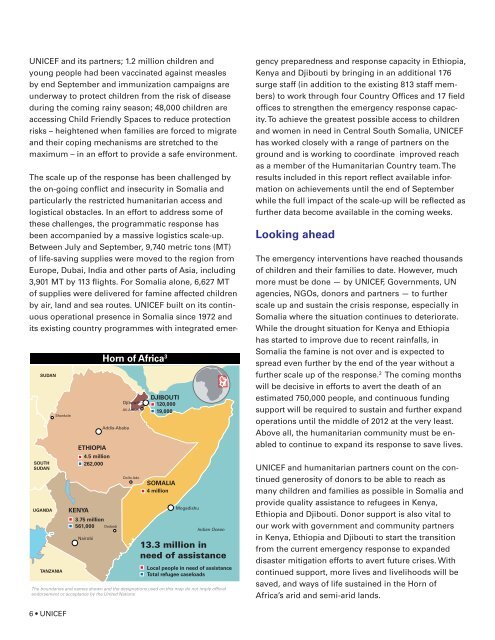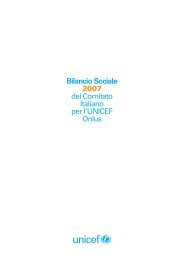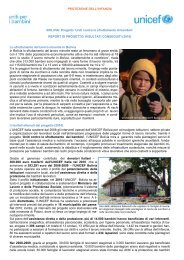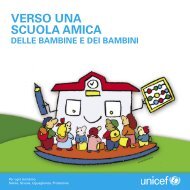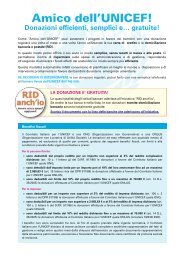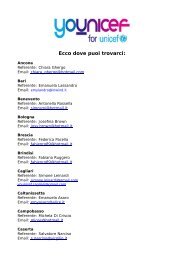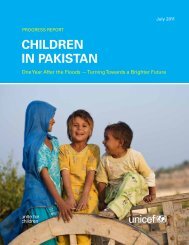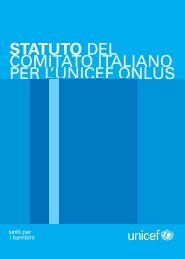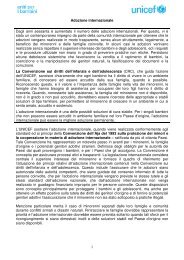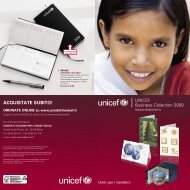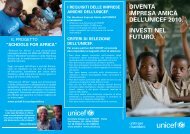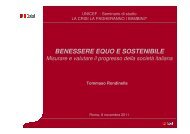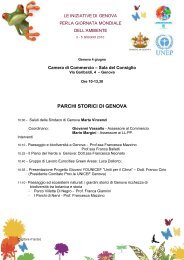RESPONSE TO THE HORN OF AFRICA EMERGENCY - Unicef
RESPONSE TO THE HORN OF AFRICA EMERGENCY - Unicef
RESPONSE TO THE HORN OF AFRICA EMERGENCY - Unicef
- No tags were found...
Create successful ePaper yourself
Turn your PDF publications into a flip-book with our unique Google optimized e-Paper software.
UNICEF and its partners; 1.2 million children andyoung people had been vaccinated against measlesby end September and immunization campaigns areunderway to protect children from the risk of diseaseduring the coming rainy season; 48,000 children areaccessing Child Friendly Spaces to reduce protectionrisks – heightened when families are forced to migrateand their coping mechanisms are stretched to themaximum – in an effort to provide a safe environment.SUDANSOUTHSUDANUGANDATANZANIAShankoleETHIOPIAKENYA4.5 million262,000NairobiAddis-Ababa3.75 million561,000 DadaabHorn of Africa 3DjiboutiAli-AddahDollo AdoDJIBOUTI120,00019,000SOMALIA4 millionMogadishuIndian Ocean13.3 million inneed of assistanceLocal people in need of assistanceTotal refugee caseloadsThe boundaries and names shown and the designations used on this map do not imply officialendorsement or acceptance by the United NationsThe scale up of the response has been challenged bythe on-going conflict and insecurity in Somalia andparticularly the restricted humanitarian access andlogistical obstacles. In an effort to address some ofthese challenges, the programmatic response hasbeen accompanied by a massive logistics scale-up.Between July and September, 9,740 metric tons (MT)of life-saving supplies were moved to the region fromEurope, Dubai, India and other parts of Asia, includ ing3,901 MT by 113 flights. For Somalia alone, 6,627 MTof supplies were delivered for famine affected childrenby air, land and sea routes. UNICEF built on its continuousoperational presence in Soma lia since 1972 andits existing country programmes with integrated emergencypreparedness and response capacity in Ethiopia,Kenya and Djibouti by bringing in an additional 176surge staff (in addition to the existing 813 staff members)to work through four Country Offices and 17 fieldoffices to strengthen the emer gency response capacity.To achieve the greatest pos sible access to childrenand women in need in Central South Somalia, UNICEFhas worked closely with a range of partners on theground and is working to coordinate improved reachas a member of the Humanitar ian Country team. Theresults included in this report reflect available informationon achievements until the end of Septemberwhile the full impact of the scale-up will be reflected asfurther data become available in the coming weeks.Looking aheadThe emergency interventions have reached thousandsof children and their families to date. However, muchmore must be done — by UNICEF, Governments, UNagencies, NGOs, donors and partners — to furtherscale up and sustain the crisis response, especially inSomalia where the situation continues to deteriorate.While the drought situation for Kenya and Ethiopiahas started to improve due to recent rainfalls, inSomalia the famine is not over and is expected tospread even further by the end of the year without afurther scale up of the response. 2 The coming monthswill be decisive in efforts to avert the death of anestimated 750,000 people, and continuous fundingsupport will be re quired to sustain and further expandoperations until the middle of 2012 at the very least.Above all, the humanitarian community must be enabledto continue to expand its response to save lives.UNICEF and humanitarian partners count on the continuedgenerosity of donors to be able to reach asmany children and families as possible in Somalia andprovide quality assistance to refu gees in Kenya,Ethiopia and Djibouti. Donor support is also vital toour work with government and community part nersin Kenya, Ethiopia and Djibouti to start the transitionfrom the current emergency response to expandeddisaster mitigation efforts to avert future crises. Withcontinued support, more lives and livelihoods will besaved, and ways of life sustained in the Horn ofAfrica’s arid and semi-arid lands.


